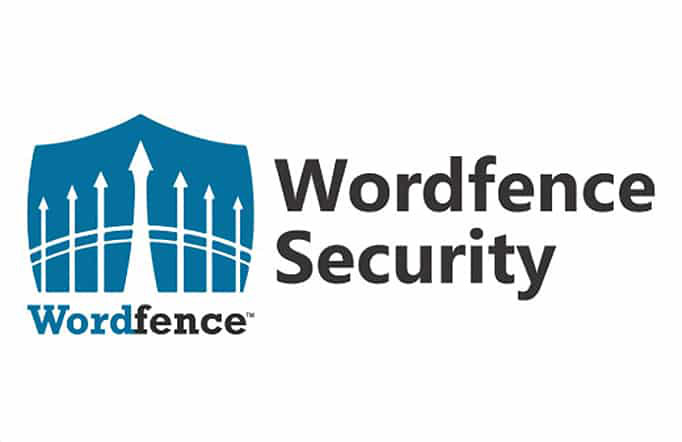15-30 seconds is all you have to show that you are a trustworthy authority with the knowledge to solve your customer's problems.
Within that time your website visitors have formulated a general sense of who you are, what you do, how professional your company is, and if they can trust you.
They have no choice. We’ve evolved as humans to judge and put things into categories quickly. We need your audience to judge you as reliable, professional, engaging, and trustworthy.
Your photography and copy need to be created specifically to speak to the needs and problems of your target audience. Professionals know how to do this.
They don’t do it alone, don’t get me wrong. They interview you (and sometimes your customers), perform market research, and use their own experience too. Professional content is more involved than what it appears at first glance.
If you want your website to convert your website users into paying customers you need content and photography created by people who do it full time for a living. It’s the same reason I don’t do my own plumbing. It isn’t in my wheelhouse.
We’ve met many a client who has said they’d take care of their own photography and 3 months later are still working on it. To put it bluntly, you should be working on your business and letting someone else come in and shoot your location, products, and/or services being made. You can collaborate with them but if you want it done, and done right the first time, hire a pro.
Your photography is part of your brand. It tells a story that you can then continue through social media, advertising, brochures, and other types of marketing.
The human brain is more inclined towards the visual representation of any written content. We translate pictures very quickly and your users will decide in 2 seconds (or less) if a photograph speaks to them.
Content that is all words might fail to stop a reader to skim through it, but pictures can get them to slow down and look at them closely.
Content that is easy to read and dotted with the right heading types and pictures immediately gets noticed by the search engines and ranks well on the search engines. If optimized correctly, your website’s images can end up on Google Images which can increase your traffic a bit.
The pictures that you post on your website are vital for the branding of your business. The tone, depth, and background in your photographs all convey a message and add to the feel of your website.
For an online grocery store, a picture of their fresh produce on the shelf or workers picking those goods from a farm can brand the store as clean, self-sufficient and hygienic. But this is only possible when you use your photographs on your website and not buy them from a stock website.
Apart from the illustrations and graphics, photographs are a crucial part of your visual content and should be handled as such. There are some inconveniences that you might have to face if you use stock photographs sold at different sites. What are those?
There are plenty of websites selling photographs related to a variety of subjects. Photographers sell the copyrights of their work to these sites, and then anyone can buy those photos from these sites.
The concept might look easy enough, but it takes away individuality from your website. Your competitors and anyone else can use the same picture that you’ve posted on your site and make your content look recycled.
A website selling stock photographs have thousands and thousands of pictures related to different subjects that you can browse through by putting in the right keywords. But even with an efficient searching system, you cannot always find the right photograph to go along with your content.
For instance, if you are selling homemade candles, then it doesn't make sense to post pictures of candles that you haven’t produced.
Outsourcing or hiring a professional photographer to provide you with original photographs is the kind of investment that will be rewarding for your business. Most photographers know technicalities that are associated with website layouts and take care of photograph dimensions and pixel quality for you.
Moreover, you’ll own the rights of all photographs posted on your website and won’t be subjected to any legal penalization or copyright lawsuits.
The primary purpose of a website is to get a brand or business recognized or noticed by the targeted audience. Optimizing your content skillfully so that it can rank well on search engines is one way to influence the search engines.
You might think that you have the aptitude to write for your website but know that you'll be competing with thousands of businesses selling the same service and product from all around the world. Therefore, your website will have a better chance of thriving against your competitors in professional hands.
Your web copy has the potential to make or break your business’ standing as it influences not only the customers but also search engines.
If your copy is optimized, then search engines will favor your content more than your competitors. The SEO techniques mentioned below cannot be learned overnight, and only a professional copywriter knows how to utilize them to produce a lead generating website copy. Moreover, a professional copywriter will know how to put together the right kind of words to influence the decisions of leads and potential clients.
1. Using the right keywords.
If you want your website to get noticed by the search engines then include the right keywords in your website’s copy. A professional copywriter will know what words to use and how many of them to use them in an average length copy.
2. Website referrals.
Hyperlinking specific words and outsourcing articles is also a rewarding SEO technique. Copywriters have enough experience and insight to figure out a way to hyperlink some of their old writings in their latest content without losing relevance.
Using different heading types is another way to get in the good graces of any search engine. Experienced copywriters know how to use this information to improve the quality of their content.
Attaching relevant images and videos with your website’s copy is also a tried and tested SEO technique.
Business owners will spend thousands of dollars to make their website look visually appealing but not enough on its content. Words have the ability to make your leads lean in towards your services and respond to your call to action immediately.
So how does your copy convert leads into buyers?
As mentioned earlier, a crisp and engaging writing style can make your leads read through the entirety of your content without losing interest. A conversational writing style that addresses the potential customers directly creates an air of familiarity between you and your leads. A professional copywriter knows what words to use to appeal to the emotional tendency of a lead. Furthermore, they know how to build the flow and take your content from point A to B and then C.
A good web copy is the one that has all the information that a leader needs to know to make their decision. From introducing your services to highlighting your product’s selling features all come under the expertise of a copywriter.
Any skilled copywriter will know how important it is to write an enticing call to action to complete any sales funnel successfully. Using the right words can increase the conversion rate of your website, exponentially.
A professional copywriter knows how to increase the conversion and ranking of your website on SERPs. Once you are visible to your targeted audience, then whether they buy your services or products or not depends solely on how you market them through your content.
Your website is probably the first thing that your potential customers will see. Therefore, you need to do an excellent job of leaving a profound first impression on them. Seeking professional help might be the only way to guarantee the success of your website.
Website copy that fails to fulfill its essential purposes is good for nothing. After all, businesses go online to expand their reach and increase their business to increase sales, but an incompetent website copy will turn off your users.
A website copy should weave in the right adjectives in sentences to introduce your business to the targeted audience. It should be concise yet compelling enough to intrigue the potential leads to know more about your business.
The content you provide at your website has the potential to brand your business. The overall impression that a reader gets from your website’s copy becomes your brand. If someone reads your web copy and doesn’t understand the nature of your services that they will associate that confusion with your business.
Furthermore, if you use extravagant words but don't elaborate on your services, then a lead will peg your services as subpar, and that will become your brand. That is why hiring a professional copywriter is imperative as they are experienced to figure out the psychology of your targeted audience.
It is essential to post only the prime-quality content on your site as it later can be recycled to market your products. A well-written web copy can be a catalyst to make your marketing campaigns a big hit as it has the potential to convert the leads sent its way into customers effectively.
A web copy’s prime focus should be highlighting the critical elements of your product and services. A lead should know why your product is better than your competitors and how buying it will benefit them or their business?
If you fail to convince your lead about the efficiency and importance of your products and services then there is no use of investing thousands to make your website appealing for the audience. The end goal of a web copy is to convert a lead into a buyer, and only a professional copywriter can help you achieve that.
If you want results online hire a professional copywriter and photographer. Repurpose that photography and content onto your offsite assets and marketing.
Related reading: Copywriting seattle
—
Thrive Design is a customer-centric web design agency from Seattle. Contact us today to find out how we can elevate your business online! Find us on Clutch, UpCity, LinkedIn, Facebook, and Twitter.
The life of a business owner can be hectic. From new client meetings to service calls, there are lots of meetings to keep up with. We know the struggles.
Do any of these sound familiar?
If so, online scheduling may be the silver bullet to revolutionize the way you do business.
Let us tell you about a few wonderful tools we’ve discovered – and actually use! – and how to best leverage their capabilities.

Meet-and-greets, tutorials, discussion of proposals, troubleshooting client website issues, and simple client check-ins. Thrive knows what it’s like to have a lot of one-on-one meetings. To keep them all straight, we use Calendly for scheduling.
Calendly is a free tool that allows you to choose your availability and then your clients schedule meetings when it’s convenient for them. To use, you set up the type of event, fill in the required fields, choose times and dates that you’re available, and then let it do the work for you. (If you need more than one type of meeting, an upgraded version is available.)
For instance, a construction contracting company could offer a half-hour free consultations to new clients. They set up appointment times on the top of every hour (to allow for travel time), Mondays and Wednesdays. Potential clients fill out a quick online form with their name, phone number address, and the type of work they’re looking for. Once booked, that date and time no longer show as available, so double-booking is impossible. Sign-up for Calendly here.

It’s very hard, if not impossible, to schedule meetings for more than a couple of people where at least a simple majority can attend. It often means multiple emails, multiple phone calls, and multiple in-person “Hey, can you tell me when you’re available next Wednesday” conversations at the water cooler.
Doodle eliminates all of this. Using the Doodle calendar, you select a variety of dates and times that work for your meeting. Participants can choose several options that work, or you can require them to make a single choice. You can also send polls to choose the next meeting date. Doodle will send out an email with a link to your Doodle calendar, and participants can make their choices. All without a flurry of emails to and from your inbox and/or a bunch of unsatisfying phone calls. Start using Doodle now.

If you offer classes, workshops, or multiple types of appointments (for example, an appointment type for each different service you offer) and have multiple service providers, Schedulicity is a great tool.
Psychiatrists, pet groomers, photographers, and health clubs have all used this online schedule and marketing service to great success. Schedulicity grants an unlimited number of class and workshop sign-ups, and up to 20 appointments per month. If you have more than 20 appointments each month, the fee for unlimited appointments is very reasonable and based on the number of providers you have.
This service also offers several add-ons including online payment, auto-billing, client management, and client text reminders. Your business can even be listed in the Schedulicity Marketplace, where current and potential clients find you and book appointments or sign-up for a class or workshop. Schedulicity works with more than 50 different service industries. Learn more about Schedulicity.
So there you have it – three terrific tools to simplify and streamline your work life. Online scheduling has changed the way we’re able to do business. We have taken the stress out of scheduling meetings so we can focus on what matters, our clients and the work they need us to do. If you find yourself regularly frustrated by the chore of scheduling, we highly recommend checking out one or more of these options to help take the headache out of scheduling meetings.
Now we want to hear from you. Have you used any of these scheduling tools? Do you love them or hate them? We’d love to hear your story. Tell us what worked and what didn’t. We might feature your success in a future blog post, or if it’s not full of sparkles and wonder, help you figure out how to get that happy ending you deserve.
—
Thrive Design is a customer-centric web design company from Seattle. Contact us today to find out how we can elevate your business online! Find us on Clutch, UpCity, LinkedIn, Facebook, Twitter, Instagram, and Pinterest.
Your online reputation matters. It can make the difference between someone taking a chance on your business, or taking a pass. But, how do you know what your online reputation is? And, once you have an idea of your reputation online, is there anything you can do about it?
To be clear - we’re talking about the reviews your customers have left online about your business. How do you find your reviews? First, do a search of your business name (start with Google). You will hopefully see a star-rating associated with your company name in the search results.
Then, go to any directory that relates to your business - Yelp and Angie’s List are very popular, for instance. You’ll get an idea of your reputation by how many reviews you have and whether you have more positive reviews than not.
Too many bad reviews, or no reviews at all, can have a tremendous impact on a potential client’s view of how well you conduct your business. While you can’t control what people will say online about their experience with your company, you can take steps that may influence how people understand those reviews.
Online Reputation Management is a subset of Local SEO.
Owning and controlling your business listings as much as possible is key. Your business listing can include your business name, address, phone number, hours of operation and a link to your website. At a minimum, claim your Google business listing, as the Google search engine is the most popular search engine in the world. Yelp is also extremely popular, so consider that as well if you are in a service industry. You should also claim your listings in the directories that directly relate to your business. For instance, if you offer home services like plumbing, or you own a roofing company, it would be a good idea to claim your listing on Angie’s List. Some directory listings let you claim for free, others want you to pay a small fee and join their network. Still, others let you claim for free, but offer premium placements in their search results for a paid fee.
If you choose to spell out the word street in your address, rather than abbreviate it on one directory, then spell it out for all listings. There are a couple of reasons for this. The Google search engine takes into account many different directories in the aggregate when ranking your business in organic search results, and by having exactly the same contact information for each listing Google will more readily understand that a specific directory listing belongs to you - and may rate your business higher. Second, for people who do a lot of research to find a reputable company, they too will more readily recognize multiple listings as belonging to your company if the exact contact information is the same each time. That name and brand recognition works in your favor.
This is a key rule, as both Google and Yelp discourage, and promise to penalize or delete, directory listings that have solicited reviews. But, do consider letting your customers know that you belong to your preferred list of directories, so if a customer wants to leave a review they know where you would like to be seen. Directories like Yelp, Angie’s List and the Better Business Bureau each have their own set of rules for how you can display their logos and signage inside your business or on your website - follow them!
Your customers like to know that they’ve been heard. Whether they review your business positively or negatively, let them know that they are valued and respond kindly to everyone. And, in this fast-paced world, don’t let a review sit unanswered for more than 48 hours. For a negative review, consider addressing it in no more than 24 hours. Otherwise, you may lose an opportunity to turn a negative review into a positive one - unhappy customers are impatient and less lenient as time elapses.
When you receive a negative review, be kind, be polite, tell them you are sorry they had a negative experience with your business. Offer to make it right, and for extra points, tell them how you’ll do it. You can’t delete negative reviews from your listings, but you can certainly change the narrative from a terrible experience with an awful company to a terrible experience with an awesome company who cares about their customer - an awesome company that made a mistake and is concerned about fixing it.
It’s a high level of customer service to follow-up with a phone call or an email. Repeat what you said in your public response to the reviewer (who knows, they may not have seen your response yet), and then follow-through on your promise.
Hopefully, their follow-up experience with you will be so stellar, that they’ll either change their review or write a follow-up review recounting all that you did to make them happy and praise your commitment to quality customer service.
Give them a few days to follow-up their negative review with a more positive one after you’ve reached out them. If they don’t, follow-up the review with a message that is upbeat and truthful. Something like, “Susan, thanks for letting us make this up to you by granting you a full refund. You should see the refund on your next credit card statement. If you do not, please do not hesitate to reach out to us again.”
These additional touch-points can make a decisive difference to potential clients - if people reading your reviews can see that you’re committed to delivering a good experience with your business, your negative reviews will count less with them, and your positive reviews will be given more weight. Most people realize that businesses are run by people and people make mistakes - and businesses who try to address and fix their mistakes are worth giving a chance (or second chance!).
So you have a few bad reviews - but, you’ve worked really hard to make the situation right and there are far, far fewer of them than there are positive reviews. But, don’t pat yourself on the back just yet - a negative review should be seen as a wake-up call and a call-to-action: what led to this bad review? How can it be avoided in the future, with a change to procedure or policy? Or, is it a matter of training employees differently, or re-training to reinforce current policy? Someone reading your reviews should never see a repeat complaint - if it happens again, it should be clear to you that the situation has not yet been fixed and a reexamination of the problem should happen immediately. These negative reviews are actually valuable tools - use them to make your wonderful business even more awesome.
In summary, managing your online reputation is a necessary component of your internet presence. Your reputation should be zealously watched and maintained, by first claiming your listings on a few key directories and then responding promptly to your reviews. Aim to be prompt, courteous, and committed to good customer experience with your business - regardless of the content of your reviews. An improved online reputation could very well improve your organic search listings and better benefit your business.
—
Thrive Design is a customer-centric web design and marketing agency from Seattle. Contact us today to find out how we can elevate your business online! Find us on Clutch, UpCity, LinkedIn, Facebook, and Twitter.
Many small businesses, even established ones, don’t know where to start when it comes to branding, website creation, and marketing. They do not have an internal department to handle these activities nor the time/knowledge to do it themselves.
The purpose of this article is to define Branding, Web Design, and Marketing and to put them in the correct order in which they need to be performed.
In fact, let’s do that right from the start.
If you want to be successful with your business understanding the roles of branding, website creation, and marketing is essential.
The first thing you need to do is establish a brand for your company.
Whenever you think of a company or a product, its name, logo, packaging, slogans, spokespeople, and identity are the first few things that will come to your mind. These things are collectively called the branding of a company, business, or product.
Ideally, your branding has been created so that anyone interacting with your brand feels certain emotions.
For example, if you are creating branding for your plumbing company it would be a good idea to elicit competence, trustworthiness, security, and reliability. After all, if you had a broken pipe you want someone who makes you feel secure and that they are reliable, trustworthy, and will get the job done.
Be warned, your company is going to fall on its face if it does not live up to your branding. Solid branding can not make up for breaking the promise of your brand.
Branding starts with your company name, slogan, colors, fonts, and logo.
Branding is the baseline for your website’s design and the first step in having your target audience be aware of who you are. If done correctly, it will help people distinguish you from the other similar companies and products by highlighting your services and presenting you in a positive light.
Successful branding presents your company as a better option than your competitors by promoting your best features. It builds your reputation among the targeted audience and dwells in their subconscious.
If you want to be successful online you must invest in your company or product's branding.
Following are the few things that will tell you why branding is the first step in the service order for your company:
A company without a reputation and characteristics features to promote will find it challenging to earn recognition for itself. There must be a name, a logo, a motto that is pushed through publications and advertising to make you stand out among the masses.
It is recommended to make your company’s logo easy to remember, and its name easy to roll off people's tongues. It should be something that should stick within the minds of the targeted audience.
We recommend testing a company’s name with your target audience. There are basic questions you can ask to make sure they are not confused about what you do and to make sure they can remember it after only a few mentions.
Impactful branding makes people aware of your company’s services at a glance. The more people are aware of your services and products; the more likely they are to lean into the sense of familiarity at times of need.
There is a sense of dependability that can be established once people are aware of what your company represents.
A well-thought and elaborate branding strategy present your company and product as trustworthy in the marketplace.
The more professional you appear in front of your potential customers, the more likely they are to trust your company and services.
Branding your company and product will help you advertise or market it better in front of the audience. You will have a logo or name that you can use in your marketing campaigns and promotional material to spread awareness and build trust among the audience.
Most advertisements follow a specific color theme or target people from a particular background to promote their services, and all of that is predetermined by branding.
If you decide to skip or invest too little in branding your company, brand or product, the next two steps in your process Website Creation and Marketing will be drastically hindered. You won’t be able to establish trust between you and your potential customers as people will find it hard to rely on a nameless brand.
Without branding, people won’t know what to expect from your company and product. They also won't understand why they should choose you over your competitors that- unlike you -have invested in a professional branding strategy.
Branding is an effective way to tell people who you are, what you stand for, and what you want to promote as a company. It reveals your company’s immediate intentions as well as long term goals to let your audience know where you are headed as a business.
Without branding, you will find it hard to devise an effective marketing strategy as well as the theme of your website.
For the last 10+ years, almost every company that has wanted to thrive needed their brand online in order to be successful.
Once you brand your company, the next order of services should be the creation of its website. If you skip this step, then you are bound to lose business opportunities and potential customers.
A website is a 24/7 sales tool. It helps your business grow by making your company or product’s information easily accessible to the audience all around the world.
A professionally designed website with messaging that speaks to your targeted audience can bring in major business. The problem most companies run into is they don’t invest in a website that actually converts. They cut corners everywhere and then wonder why the leads are pouring in.
The website extends your branding and it is the place where many users make their final decision whether to reach out to you.
90% of people do research online before hiring a company. Your website allows them to make sure your services match up with exactly what they need. You need to showcase your best portfolio of services and products with professional copywriting and a design that compels the user to act.
Your company's logo, name, and messaging all determine how you want the world to perceive you. After branding, your website is the advocate of your image and must present only the best version of you.
Even if you skip branding, you'll have to brand your website by creating a logo, name, and design for marketing purposes.
You might be short on funds and want to skip the process of branding, but sooner or later, you'll have to consider branding your company, business or product. It might be hard to digest, but there is no way of marketing your business without branding it first.
As stated earlier, branding determines who you are and who you will be serving with your services in easy to grasp concepts and words. If a prospect can’t find the answers to their basic questions regarding your services, then your investment in branding and website creation all mounts to null.
After all why send people to a website that does not convert? You will only be wasting your money on your halfhearted efforts.
This is where most companies fail. They hire companies that are very inexpensive that don’t spend the time or don’t have the skills to properly brand your company and create a website.
And then… they fail to market it at all.
Marketing through promotional materials and advertising is the final step. Many people will mistake marketing with branding and vice versa, but there is a significant difference between the two.
Branding initially is a brand's identity, and marketing is when that identity is used to spread awareness about a company or product via different tools of communication. The terms are so interconnected that it isn’t surprising if people can't tell where branding ends, and marketing begins.
Marketing evolves with the means of communication and advancement in promotional techniques. Whereas branding can’t be changed as frequently as marketing and most companies prefer to stick to their identity for years to come.
The purpose of marketing is to let people know about the services that you are offering and how it will benefit them in the long run. There isn’t a fixed formula to market your company or brand, and you can either be humorous, serious, or professional while promoting your business.
There are various ways to market your brand, but the most effective way is the one that speaks to the pains and desires of the targeted audience. A marketing strategy with all its intents and purposes aims to bring forth results in terms of sales and profits.
A marketing strategy is the most effective when it is built upon the already established perception of your company and product by your branding. It can not differ from your branding as it will create a drift between who you are and what you are promoting and will make people lose their trust in your brand.
Marketing without Branding
A product or company’s marketing campaign must be consistent in its digital assets but not in its means.
Consistency in your marketing strategy might seem unnecessary, but when you promote your company's identity, then the core values should remain the same. If you don't pay mind to this small detail, then you’ll be developing a campaign that will be riddled with conflicting facts and values, making your targeted audience confused and question your credibility. A lot of this happens in the subconscious. Consistency and simplicity are many times more powerful than complicated and varied messaging.
As noted earlier, branding is an attempt to elicit certain emotions when interacting with your brand. Without branding, your marketing will lack an emotional direction and won’t connect with your audience.
When you hire a marketing team, they will want to know what values you want them to promote as well as what goals you want to achieve through your marketing campaign. All these things are planned during the branding process and should be adhered to strictly while planning a marketing strategy.
Branding defines what your targeted audience is along with your long- and short-term goals. A marketing strategy that follows the direction set by branding is likely to bring in more conversions as compared to the one without it.
Marketing without a Website
A digital ad is only useful when it leads a viewer to your website for them to learn more and take action. An ad has limited space to promote only the core values of your idea, and the rest is the responsibility of your website that entails converting a lead into a customer.
The content you put up on your website determines whether a lead converts into a customer or not. For this, the design of your website page should be attractive and engaging enough to hog even a casual viewer’s attention as well.
Written content, explainer videos, and interactive graphics are the few things that play a crucial role in the success of any sales funnel. That is why one must hire the most competent and professional team to create their business’ website.
Another purpose of a marketing campaign is to make your product or company the talk of the town. It does so by employing techniques of SEO (Search Engine Optimization), writing gripping content, and dealing in referral articles with different sites.
Social media is one of the most popular ways of creating a buzz about your company and product. The more people talk about you, the more successful your marketing strategy will be. But if you don't have a website, then all that buzz will be for nothing as people won’t know where to direct their curiosity.
Believe it or not, a website allows you to track the return on your investment. It can tell you exactly how someone came to you that filled out your contact form, newsletter, or called you. You can figure out how long it took for a visitor to use your services, what made them lean towards your services, and what pages attracted them the most by calculating a lead’s stay on individual pages.
Branding, website creation, and marketing all have a particular place in the service order of any company or product. If you skip or invest too little in any of these steps, your business cannot succeed online.
For instance, without branding your business, you will find it challenging to design your website as well as plan an effective marketing strategy for it. Similarly, without creating a website for your business, your marketing strategy will struggle to meet the demands of digital advertising.
If you want to be successful as a business follow the correct order of services for your company, branding, website creation, and marketing. While you are at it, try to spend optimum time and efforts in making them a success because a halfhearted investment is the same as no investment at all.
—
Thrive Design is a customer-centric web design and marketing agency from Seattle. Contact us today to find out how we can elevate your business online! Find us on Clutch, UpCity, LinkedIn, Facebook, and Twitter.
Websites are hacked by autonomous machines these days... not by humans hacking individual sites. These machines (aka bots) search the internet for vulnerable websites day and night.
We get calls every month from people whose websites got hacked. If you own a WordPress website, I have some very specific things you can do to protect yourself.

Don’t assume your web hosting does this for you. Many hosting companies do not and, if they do, they charge you to access it and it typically only goes back 30 days.

This is the #1 reason for hacked WordPress websites and it’s simple to do. You just need to have diligence when doing it. Check out our Care Plans, as we do not recommend a DIY approach.

That is what WordPress comes with out of the box and it should be changed immediately. Create a new administrative level user and delete "admin."

A password should be so secure that it’s impossible to memorize. Think lots of special characters and uppercase/lowercase combos.

Use WPS-Hide Login plugin to do just that!

There are way too many options to talk about here. Wordfence audits your website security, lets you do virus checks, and even lets you block whole countries from viewing your website.

Instead, create a separate administrative login for trusted developers to use. That way you can turn it off.
—
Thrive Design is a customer-centric web design and development agency from Seattle. Contact us today to find out how we can elevate your business online! Find us on Clutch, UpCity, LinkedIn, Facebook, and Twitter.
You have a website but the content hasn’t changed in several months, maybe even years. Google stops to care as much about your website when this happens so let's change it!
First of all, ask yourself why someone would come to your website and what end result you'd like from their visit. For most of my clients, they offer a service and web users are coming to the website to find that service. Their goal is to turn those web users into paying customers.
Get rid of staleness by adding content to your website that draws in the user to have them contact you. Most people need to be sold… and sold quickly. Giving them something for free works wonders. (For example, the guide at the bottom of our web design page).
If you are a plumber, give them an article such as “5 things to do before calling a plumber about a leaky faucet.”
If you are a housecleaner, give them an article “How to prepare for a housecleaning.”
This kind of content shows you as a thought leader in your industry and that you are putting forth good energy and will be helping them out. (When you do this, make sure it’s a blog post with its own page so that Google can send searchers to it when they type in the relevant search terms.)
Beyond regular content that gives useful tips and free advice, be sure to have your contact information prominently displayed in your header. If you offer a free consultation, have a Call to Action button for this above the fold on your homepage (or better yet in the header). For my business, getting clients on the phone is of the utmost importance.
You need your customers to find your website. For your customers to find your website, Google needs to know you are offering new, fresh content that searchers care about. The three steps we recommend to accomplish that are:
—
Thrive Design is a customer-centric web design and marketing agency from Seattle. Contact us today to find out how we can elevate your business online! Find us on Clutch, UpCity, LinkedIn, Facebook, and Twitter.
I've found some clients have hesitations about working with a web designer. They worry about what will be asked of them or that they aren't technical enough for the task.
My question to them is "How well do you know your company, products, services, staff, and customers."
If you can describe those five things in detail, a good web designer can take care of the rest. It is helpful to give them at least three examples of websites you like and why you like them so they can get an idea of the design and functionality you are looking for.
Next, you and your web designer will determine what content will be included on your website. Web designers will break this down into a list of webpages, also called a sitemap. Each webpage needs to have one or more images and text associated with it. The designer will help you with the basic idea but either you or a hired copywriter need to write the actual content that will appear on the webpage.
For the design, web designers will ask for attributes you want your website to have. Most of my clients, for example, ask for attributes such as "professional," "easy to use," and "inviting" but others will want it to be "cutting edge" or "scientific." We can work with these adjectives as a starting point before drilling down into the nitty-gritty details.
Like interior design, we'll start the details selection process with a mood board. Only instead of an actual mood board, we use your company's logo that should have your brand colors and fonts. Those fonts, colors, and style of the logo become the base for the website design. This is the perfect starting place for building out the look and feel of your website.
Once there is a mock-up of your site that includes the look, feel, fonts, and colors, you will be asked to critique the design and request modifications to it. We will then create the website using our artistic abilities and will request feedback from you on how you'd like it changed, if at all.
There can also be custom features on your website based on your goals. There are literally hundreds of these features that can add functionality and beauty to your page. Here are just a few that we've worked with:
If you just want a basic website (aka brochure website) that talks about your business, showcases your products/services, and gives clients a way to contact you, WordPress or Squarespace (of podcast fame) are great options for you.
We prefer WordPress as it is great for adding features like the above. In fact, they have over 56,000 plugins that do this!
Building a website doesn't have to be scary. If you have an experienced web designer that you trust who has a strong process, you'll do just fine.
Just be prepared to give feedback about the website design and optionally write content/provide images. A good web designer will have a network of resources to pull from (content writers, photographers, videographers, etc). They should also provide you with a formal, signed proposal that includes everything that will be included in the project.
Anything less than that is asking for trouble.
—
Thrive Design is a customer-centric web design agency from Seattle. Contact us today to find out how we can elevate your business online! Find us on Clutch, UpCity, LinkedIn, Facebook, and Twitter.
If you could wave a magic wand and have your website’s visitors do one thing on your website, what would it be?
That’s called your primary call-to-action. You may not have a magic wand, but here are some “spells” you can cast on your website to drive users toward this action.
Your Primary Call-To-Action is the number-one goal of your website. It could be any number of things: to book a call with you, to sign up for your mailing list, to register an account, etc.
How can you drive users toward this desired action? Here are a few pointers.
Fine-tuning the design and content of a webpage to compel the user to take a particular action is called conversion optimization. You can drive visitors toward this desired action through clever design and compelling copy. Let’s take a deeper look into each of these.
Related reading: Copywriting seattle
Your call-to-action (CTA) should be prominently and easily accessed on your site. Moreover, your design should lead people right to it. Use strong visual elements to emphasize your call-to-action: Don’t hide it at the bottom of a page or in a menu. Let it be loud and proud at the center of your design.
You’ll also need clear copy that encourages people to click the call-to-action. Your call-to-action should be put into words, just like any magic spell!
Remember, it’s called a “call-to-action” for a reason. It should have a clear, compelling action verb such as “Get” or “Buy,” and it should express to the reader what benefit they’re going to get by taking the action. Consider the following examples:
Notice a common theme? These calls-to-action start with a verb and have a useful subject. A good formula is “Verb + What You’ll Get.”
Be sure to write your website content in a similar style to your call-to-action. For example, if you use a fun, quirky style, carry that through to your call-to-action. It should be a consistent, engaging experience for your visitors.
Most CTAs live in buttons that you can place prominently on your page. Don’t hide the call-to-action in a long paragraph: Make it loud and proud in your design!
Give it a large contrast with the surrounding elements by using a complementary color to help it stand out. Another good trick is to have the button change color when the user hovers over it. You can achieve this with CSS.
Your primary call-to-action doesn’t have to be alone on your website. You can also choose a secondary call-to-action. For example, if your website’s main goal is to get people to book your services, your secondary goal could be to have them sign up for your mailing list.
Place your secondary call-to-action in a prominent place that’s also out of the way of your primary call-to-action. For example, your primary call-to-action could be in the header of your page, but the secondary one could be “below the fold.”
Your number-one goal for the website should shape and define your entire strategy for the site. While writing and designing each page, think about how you can work this magic to drive visitors toward your goal.
Remember, simple designs and copy go a long way: You don’t want to confuse your visitors!
Need help? Reach out to Thrive for expert assistance in designing your website to lead your visitors to your desired destination. We’re here to help optimize your website for conversion!
—
Thrive Design is a customer-centric web design agency from Seattle. Contact us today to find out how we can elevate your business online! Find us on Clutch, UpCity, LinkedIn, Facebook, and Twitter.
Competition research is the practice of discovering and documenting companies that providing the same services as you. It is an essential step in designing the most effective website for your business. Competition research can also be an important component of Local SEO.
Depends on how much time you have on your hands versus money.
Competition research is usually done by professionals who are much more efficient than you can be and more thorough as well. You also want a third party who isn’t biased and won’t be “found out” by the competition.
Competition research done right isn’t unethical, but there are some grey areas that are best left to the professionals.
I always suggest hiring someone for competition research. Your time is best building your business and providing the service not doing research.
Looking at the questions above do you see what your company is missing? Do you see opportunities for expanding the information you provide on your website? Is your pricing and offer showcased powerfully online?
Competition isn't just about snooping... it is to improve your company and offer. If you'd like help with some competition research our team can help.
—
Thrive Design is a customer-centric web design and marketing agency from Seattle. Contact us today to find out how we can elevate your business online! Find us on Clutch, UpCity, LinkedIn, Facebook, and Twitter.
The truth is nobody's end goal is to have a website. They want something else whether it's more customers, to raise their prices, add a new offering, or any other business goal. They know that a new website can help accomplish that goal.
This process is designed to help us find out everything we need to know about your business so we can build a website that will work for you. This includes:
We pride ourselves on robust proposals that include all the information you need to know in order to make an informed decision.
Give us a call, drop us an email, send us a carrier pigeon, or attempt some smoke signals to let us know you need our help. We'd love to hear more about your project.
To learn more about what makes a website successful, read our guide.
—
Thrive Design is a customer-centric web design and development agency from Seattle. Contact us today to find out how we can elevate your business online! Find us on Clutch, UpCity, LinkedIn, Facebook, and Twitter.
How much does it cost to build a website?
This is the most common question we get at Thrive.
I understand that cost is usually the #1 thing on people's minds when starting a new project.
However, it's the same as asking how much does it cost to build a house?
Hand on heart the cost of your project has many many factors
My best friend could build you a shack out of 2x4's for around $800. It could be considered a house but I wouldn't want to live in it.
Websites are like that. It all depends on what you are looking to do.
So start there... talk about what your goals and pain points are and we can figure out what it will take to get there.
Our typical websites range from $20,000 and $30,000. A budget of $20,000 is the minimum we have found to build a website that will convert users into paying customers. We are only interested in working on projects that will make bring you paying customers.
Examples of websites in this range:
This allows us to create a site that is uniquely branded, performs great, is secure and mobile friendly and also allows us time to create customer lead forms and email capture systems.
If you would like to learn more about what it would take to design and create your unique project please contact us.
—
Thrive Design is a customer-centric web design agency from Seattle. Contact us today to find out how we can elevate your business online! Find us on Clutch, UpCity, LinkedIn, Facebook, and Twitter.